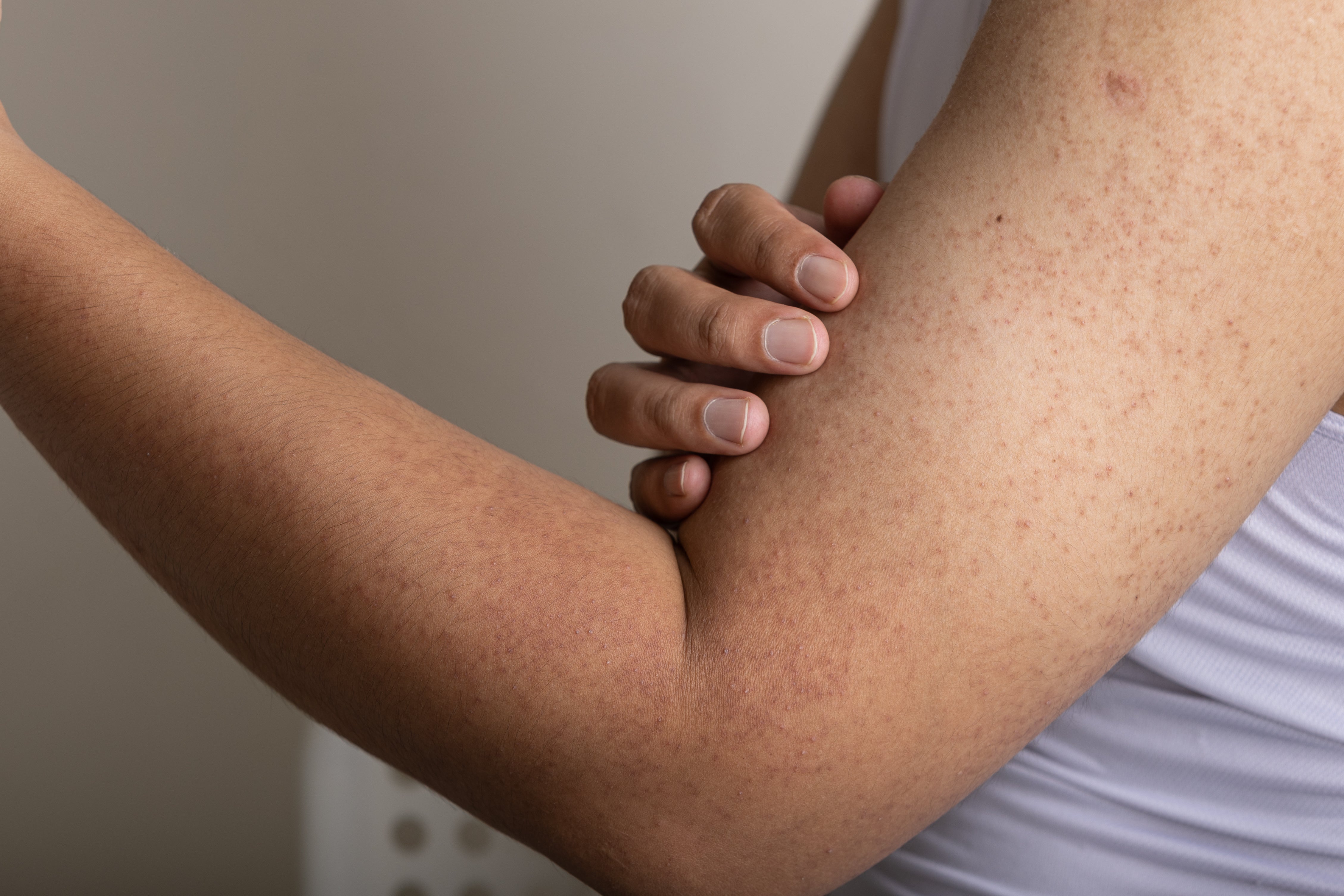Do you have bothersome patches of bumpy skin on the arms, legs, or cheeks? You may have a condition called keratosis pilaris. Here are some common questions about KP and information to help you know what next steps to take!
What is Keratosis Pilaris (KP)?
KP is a common skin condition that causes small bumps on the back of the upper arms, the upper thighs, the buttocks, and/or the facial cheeks.
What causes KP?
Hair follicles become plugged with a naturally-occurring protein in the skin called keratin, causing bumps to form.
Who is at risk for developing KP?
KP can occur in any age, ethnicity, or sex, but it is most common in females and individuals with sensitive skin. KP usually shows up by age 10 and can worsen with hormonal changes, like puberty or pregnancy. KP is fairly common, occurring in about 50-80% of teens and up to 40% of adults. It can also be more common in people with eczema or sensitive skin.
What does KP feel like?
KP bumps are usually not painful, though sometimes they can be slightly itchy. Most of the time they do not hurt or itch at all. The bumps feel rough and raised, like the texture of “goosebumps.” The bumps can be flesh-colored or pink-to-red.
What are the treatment options for KP?
KP does not need to be treated unless it is bothersome. In fact, KP frequently improves or completely resolves by early adulthood without treatment in most cases. While there is no cure for KP, it can be improved and better controlled with over-the-counter preparations that contain the following ingredients:
-
Alpha hydroxy acids (glycolic acid or lactic acid)
-
Urea (check out our Skin Wise Clinical 40% urea)
-
Hydrocortisone (for itch; use should be limited to less than 14 days per month)
Any other helpful tips?
-
Use mild, fragrance-free cleansers in your skincare routine. Avoid scrubbing or mechanical exfoliation, as this makes KP worse and often leads to skin irritation.
-
Moisturization reduces the severity of KP. Use a fragrance-free moisturizing cream or ointment as part of your daily skincare routine on affected areas.
-
Avoid scratching or picking at bumps. Any form of skin irritation will worsen KP and can increase risk of infection and scarring.
When should I see a dermatology provider?
While KP is not a danger to one’s health, it can still be quite bothersome. If you have already tried over-the-counter treatment options for KP and it bothers you, book an appointment with a dermatology provider who may be able to prescribe stronger treatments. Another reason to seek treatment is if there is any concern for a secondary infection (pain or pus-filled bumps).
Book an appointment with one of our dermatology providers to talk about KP or any other skin concerns you may have!





